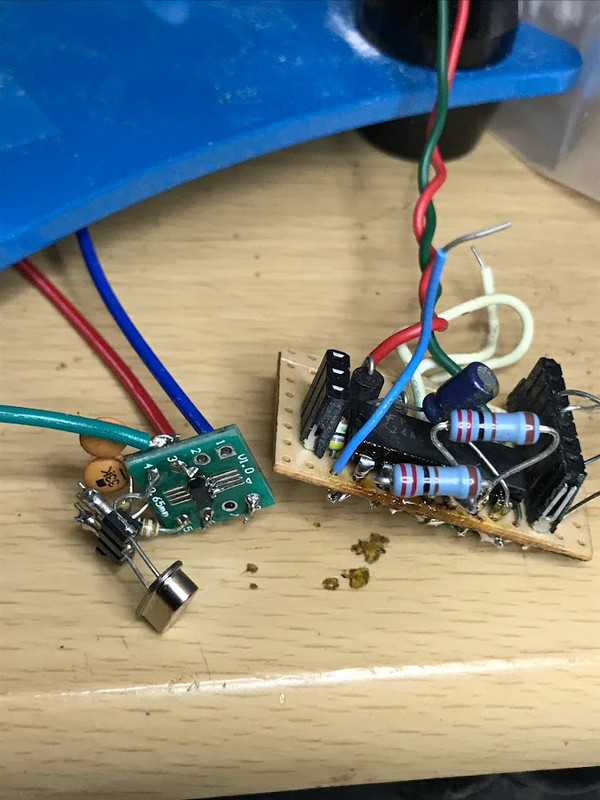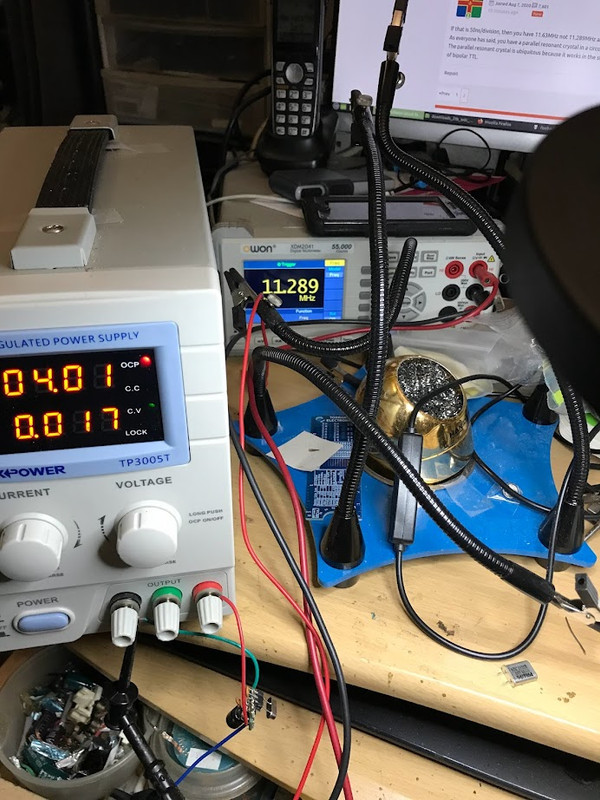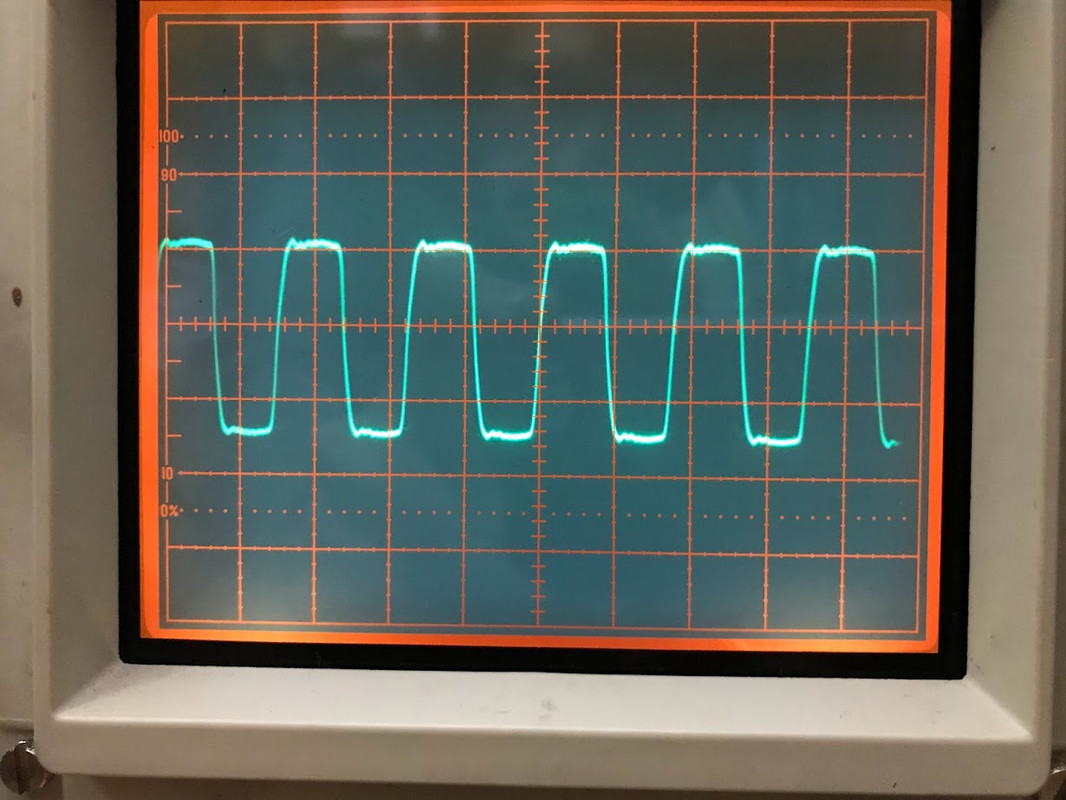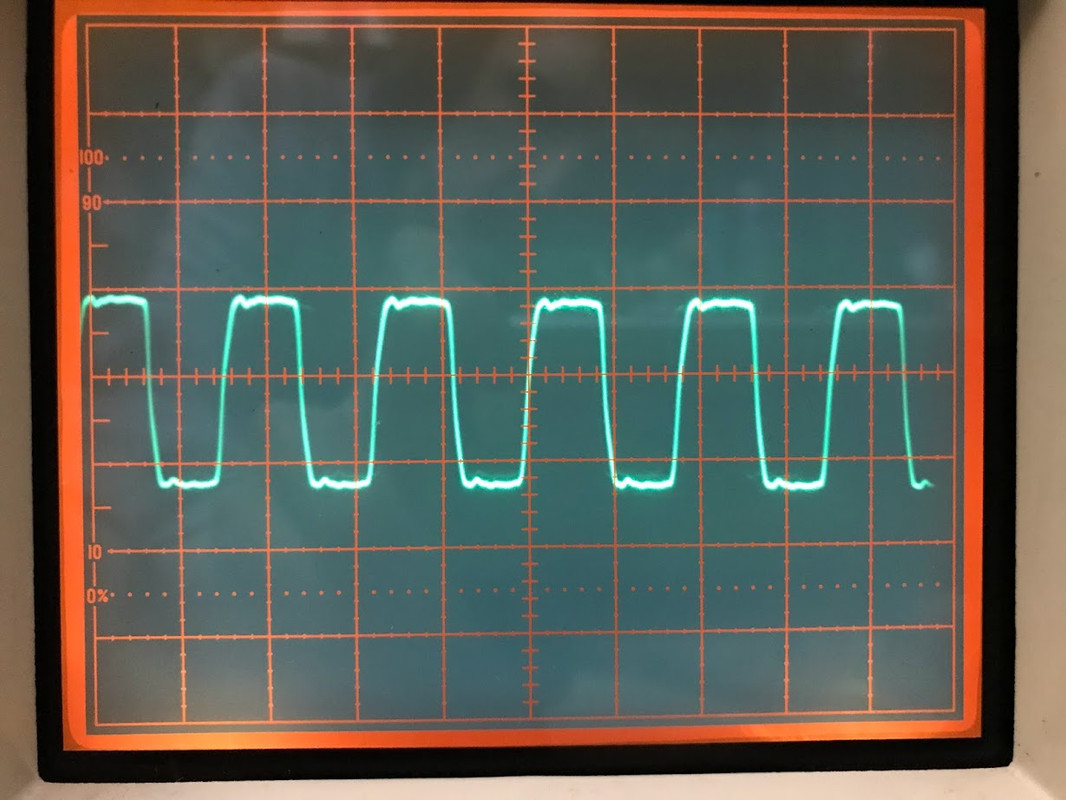13mh13
Pi-s Artist
My Flea became a tick because:
-- a tick is an arachnid (8-legs)
-- the orig. Veroboard Flea I hacked in 2007 now has two 4-pin oscillators (2x4=8), each can be quickly switched in between.
-- The Dream Project is based on an original, strange NOS Philips/Magnavox CDP that was made for 8-pin tda1543
The photos below are a continuation of another exterior thread that was de-serviced by "those in charge".
Some of this the following content is also based on postings here on PFM. E.g. see:
https://pinkfishmedia.net/forum/threads/flea-to-saa7210-remove-22k-resistor-for-x_out-x_in.280206/
Some of what you're looking at in the photos below:
Orig. Magnavox CDB2000 (Dream Project, in situ) --> CS8421 + TDA1545a --> Rudolf B/Jocko Homo IV (Dream Project, in situ).
The LARGE FONT stuff is per a "plug-n-play" feature I had wanted for a very long time. It allows one to keep as much of the upstream and downstream (in situ) stuff in place while still allowing me to rapidly switch out, say, dac chips. The plug-n-play is not a hot/live feature (to protect electronics), but does allow one to swap out DACs (or DF+DAC, ASRC+DAC, etc) in under a minute. This should please some objectivists.
In the exterior thread, you'll note I had experimented with several other plug+play modules, all built on Vero.
The CS8421 + TDA1545 was an important module experiment as it allows one convert from I2S to EIAJ with a single SSOP device. All prev methods that I'm aware of (including ones that I have prototyped) have been messy glue logic using multiple 74hc devices. Various CS841x receiver chips -- like classic CS8414 -- also allow for I2S to EIAJ conversion. However, the CS841x receiver chips do not allow for I2S input. Only SPDIF.
With the CS8421 + TDA1545, using quite a bit of resistor-based pin-hardware logic control/hacking of the CS8421, I've got both I2S-to-EIAJ conversion and the goodness of ASRC -- all on that small SSOP device. Cool. Alas, for NOS purists, the CS8421's minimal output is 2x. Ahh ... but sonics ....
As reported in ...
https://pinkfishmedia.net/forum/threads/flea-to-saa7210-remove-22k-resistor-for-x_out-x_in.280206/
... the sonics are very, very good.
And it was resourceful use of the orig Flea that sat retired since 2009.
And Martin may recognize one of his LM317 tracking -pre-regs (it's a dual +/- 15v version bult in 2007; currently using just +15v for the Rudolf IV)


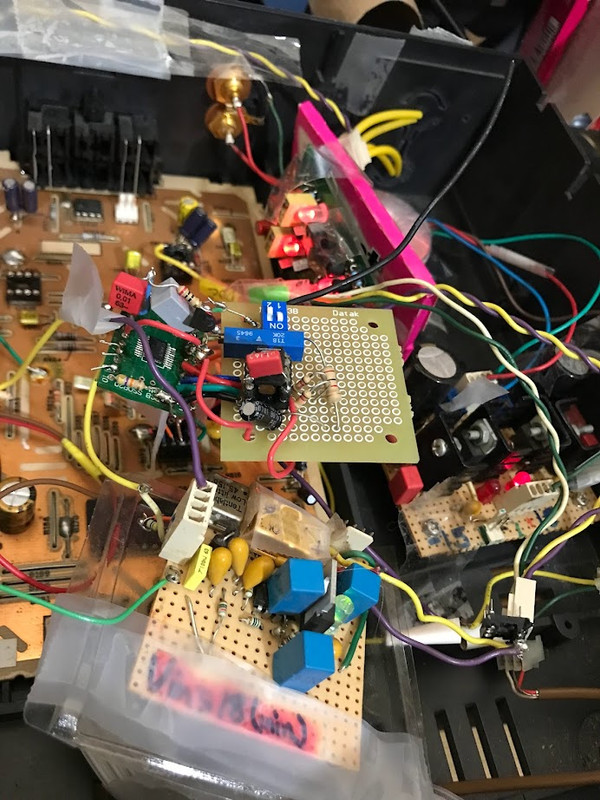


BONUS:
Below is a TDA1387 module, rapidly swapped out, and now playing as a NOSer (under 30sec).
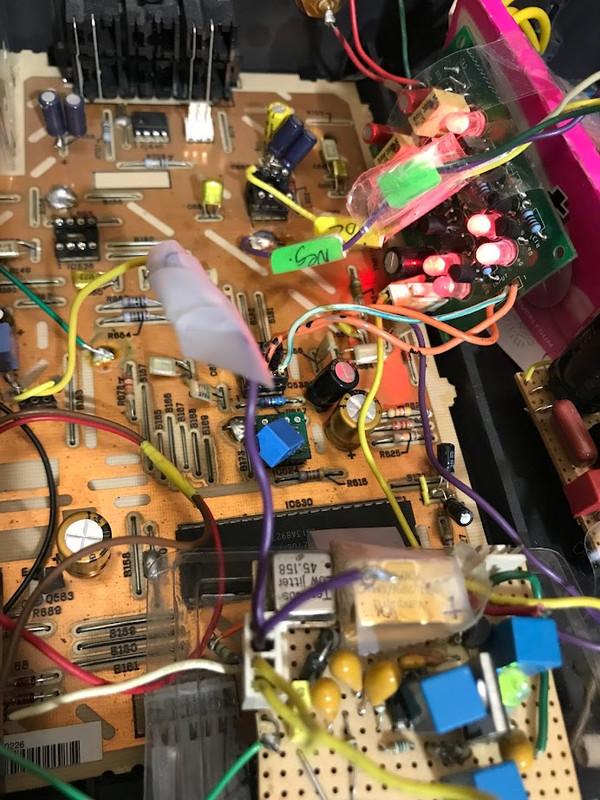
-- a tick is an arachnid (8-legs)
-- the orig. Veroboard Flea I hacked in 2007 now has two 4-pin oscillators (2x4=8), each can be quickly switched in between.
-- The Dream Project is based on an original, strange NOS Philips/Magnavox CDP that was made for 8-pin tda1543
The photos below are a continuation of another exterior thread that was de-serviced by "those in charge".
Some of this the following content is also based on postings here on PFM. E.g. see:
https://pinkfishmedia.net/forum/threads/flea-to-saa7210-remove-22k-resistor-for-x_out-x_in.280206/
Some of what you're looking at in the photos below:
Orig. Magnavox CDB2000 (Dream Project, in situ) --> CS8421 + TDA1545a --> Rudolf B/Jocko Homo IV (Dream Project, in situ).
The LARGE FONT stuff is per a "plug-n-play" feature I had wanted for a very long time. It allows one to keep as much of the upstream and downstream (in situ) stuff in place while still allowing me to rapidly switch out, say, dac chips. The plug-n-play is not a hot/live feature (to protect electronics), but does allow one to swap out DACs (or DF+DAC, ASRC+DAC, etc) in under a minute. This should please some objectivists.
In the exterior thread, you'll note I had experimented with several other plug+play modules, all built on Vero.
The CS8421 + TDA1545 was an important module experiment as it allows one convert from I2S to EIAJ with a single SSOP device. All prev methods that I'm aware of (including ones that I have prototyped) have been messy glue logic using multiple 74hc devices. Various CS841x receiver chips -- like classic CS8414 -- also allow for I2S to EIAJ conversion. However, the CS841x receiver chips do not allow for I2S input. Only SPDIF.
With the CS8421 + TDA1545, using quite a bit of resistor-based pin-hardware logic control/hacking of the CS8421, I've got both I2S-to-EIAJ conversion and the goodness of ASRC -- all on that small SSOP device. Cool. Alas, for NOS purists, the CS8421's minimal output is 2x. Ahh ... but sonics ....
As reported in ...
https://pinkfishmedia.net/forum/threads/flea-to-saa7210-remove-22k-resistor-for-x_out-x_in.280206/
... the sonics are very, very good.
And it was resourceful use of the orig Flea that sat retired since 2009.
And Martin may recognize one of his LM317 tracking -pre-regs (it's a dual +/- 15v version bult in 2007; currently using just +15v for the Rudolf IV)





BONUS:
Below is a TDA1387 module, rapidly swapped out, and now playing as a NOSer (under 30sec).



